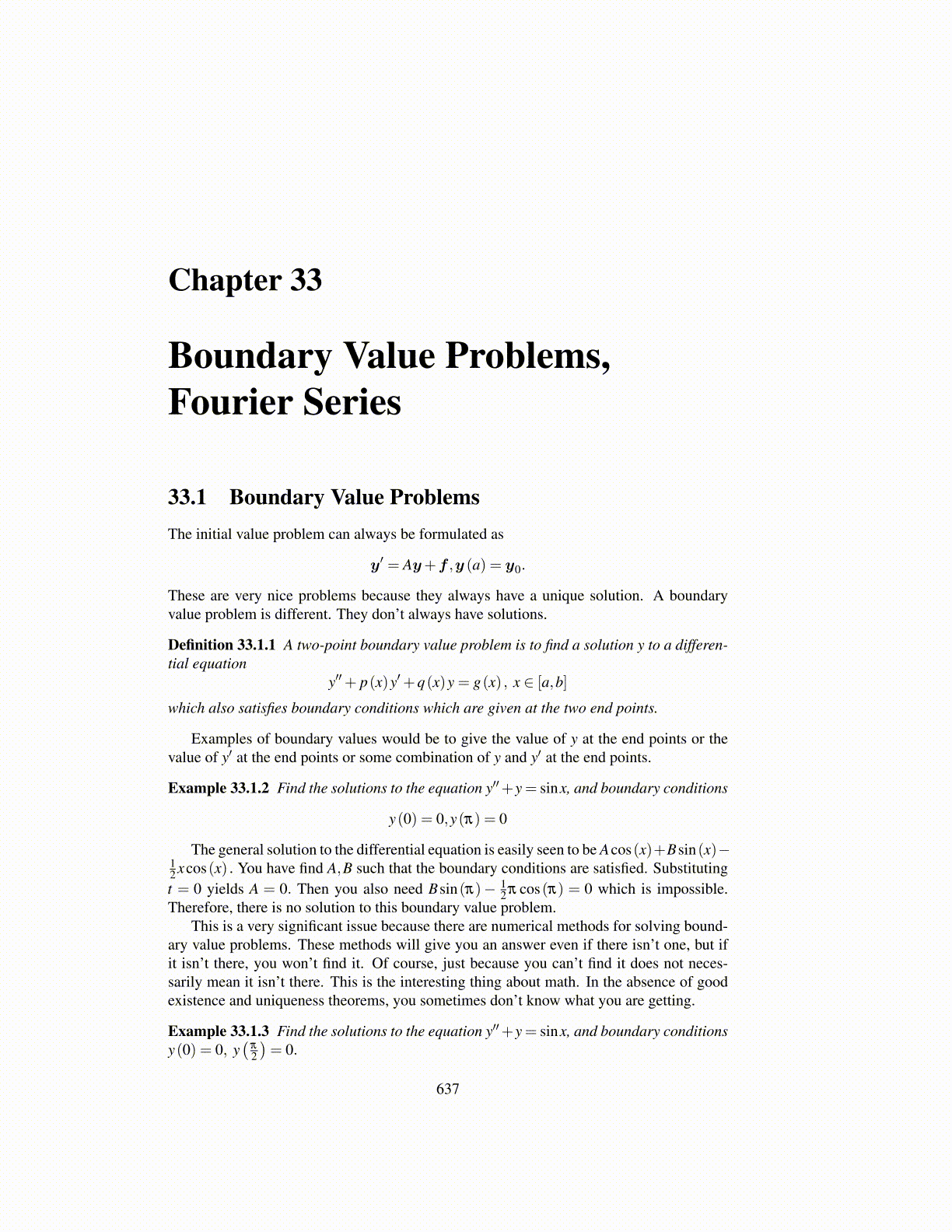
Chapter 33
Boundary Value Problems,Fourier Series
33.1 Boundary Value ProblemsThe initial value problem can always be formulated as
y′ = Ay+f ,y (a) = y0.
These are very nice problems because they always have a unique solution. A boundaryvalue problem is different. They don’t always have solutions.
Definition 33.1.1 A two-point boundary value problem is to find a solution y to a differen-tial equation
y′′+ p(x)y′+q(x)y = g(x) , x ∈ [a,b]
which also satisfies boundary conditions which are given at the two end points.
Examples of boundary values would be to give the value of y at the end points or thevalue of y′ at the end points or some combination of y and y′ at the end points.
Example 33.1.2 Find the solutions to the equation y′′+y = sinx, and boundary conditions
y(0) = 0,y(π) = 0
The general solution to the differential equation is easily seen to be Acos(x)+Bsin(x)−12 xcos(x) . You have find A,B such that the boundary conditions are satisfied. Substitutingt = 0 yields A = 0. Then you also need Bsin(π)− 1
2 π cos(π) = 0 which is impossible.Therefore, there is no solution to this boundary value problem.
This is a very significant issue because there are numerical methods for solving bound-ary value problems. These methods will give you an answer even if there isn’t one, but ifit isn’t there, you won’t find it. Of course, just because you can’t find it does not neces-sarily mean it isn’t there. This is the interesting thing about math. In the absence of goodexistence and uniqueness theorems, you sometimes don’t know what you are getting.
Example 33.1.3 Find the solutions to the equation y′′+y = sinx, and boundary conditionsy(0) = 0, y
(π
2
)= 0.
637